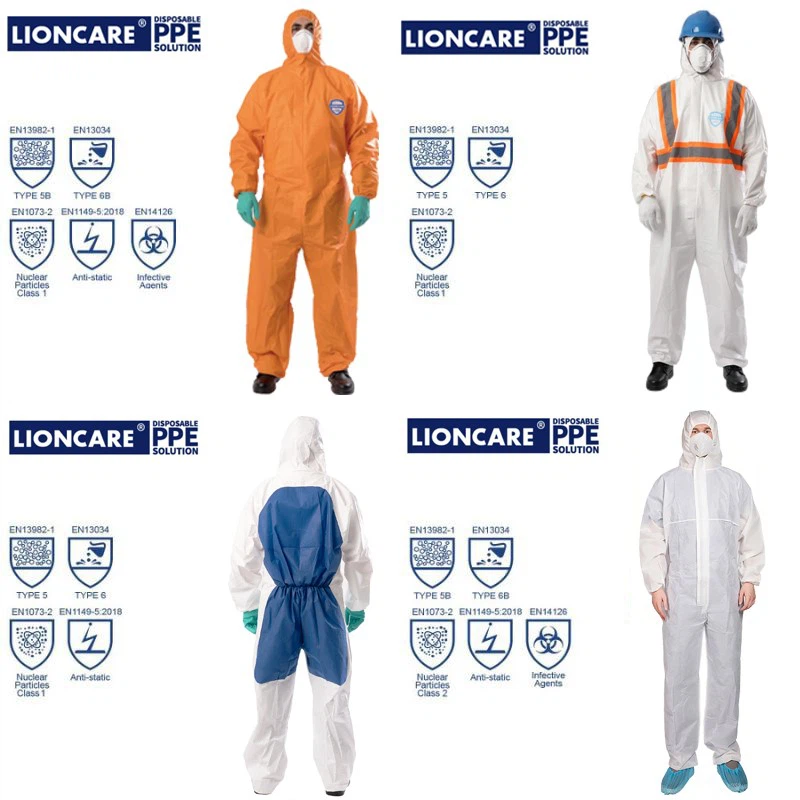What Are The Different Types Of Disposable Coveralls?
Jul 31, 2024
What are the different types of disposable coveralls?
Disposable coveralls come in six distinct categories, each designed to offer varying levels of protection. When choosing the right disposable coverall for your needs, it's crucial to discuss your specific protection requirements with a product expert, as there may be statutory and regulatory standards applicable to your workplace.
Type 1: These coveralls provide the highest level of protection against dangerous gases and liquids. They may feature an air supply line to ensure the wearer is completely shielded from hazardous substances.
Type 2: These coveralls maintain positive pressure but are not gas-tight. They offer robust protection against liquids, vapors, and dust, making them suitable for environments where gas exposure is not a primary concern.
Type 3: Designed to be liquid-tight, Type 3 coveralls have sealed seams rather than stitched ones. This design prevents liquids from penetrating, providing reliable protection in wet or chemical-rich environments.
Type 4: Similar to Type 3, these coveralls protect against chemical sprays but are less heavy-duty. They are ideal for scenarios where there is a risk of liquid chemicals being sprayed but not in high volumes or pressure.
Type 5: These coveralls are designed to prevent the ingress of dust and airborne particles, including hazardous materials like asbestos. They ensure that the wearer is protected from particulate contaminants, provided disposable coveralls are used.
Type 6: Offering protection against light sprays and chemical splashes, Type 6 coveralls provide a lower level of chemical protection compared to Types 3 and 4. They are suitable for less hazardous environments where minimal chemical exposure is expected.

Popular Types and Materials: Types 4, 5, and 6 are the most commonly used disposable coveralls. These types are typically made from non-woven polypropylene or breathable microporous fabric. High-quality Type 5 coveralls, particularly those used for asbestos removal, often utilize a triple-layered SMS (spunbond, meltblown, spunbond) fabric. This construction provides excellent protection while maintaining breathability and comfort for the wearer.
Additional Considerations: When selecting disposable coveralls, consider factors such as durability, breathability, and the specific hazards present in your work environment. It's also essential to ensure that the coveralls meet relevant industry standards and regulations to provide adequate protection for the intended use. By understanding the different types of disposable coveralls and their specific applications, you can make an informed decision to ensure the safety and well-being of individuals in hazardous work environments.






